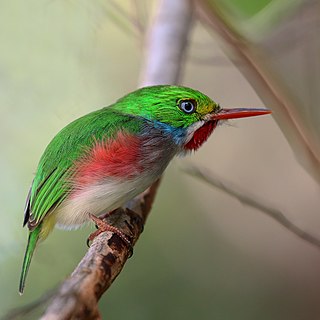
The Cuban tody is a bird species in the family Todidae that is restricted to Cuba and the adjacent islands.

Kaniska canace, the blue admiral, is a nymphalid butterfly, the only species of the genus Kaniska. It is found in south and southeast Asia.

Gibbula multicolor, common name the multicoloured topshell, is a species of sea snail, a marine gastropod mollusk in the family Trochidae, the top snails.
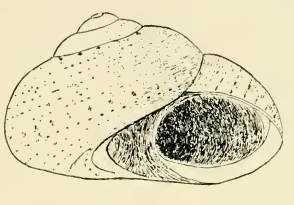
Fossarina reedi, common name Reed top shell, is a species of very small sea snail, a marine gastropod mollusc or micromollusk in the family Trochidae, the top snails.

Geoplaninae is a subfamily of land planarians endemic to the Neotropical region. Members of this family are sometimes referred to as the Neotropical land planarians. However, one species, Obama nungara has been introduced in Europe.
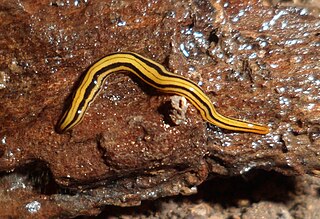
Luteostriata is a genus of land planarians from Brazil characterized by a yellow body with dark longitudinal stripes.

Obama is a genus of land planarians from South America. It contains several species adapted to human-disturbed environments, including the only invasive land planarian native to the Neotropical realm, Obama nungara, which has been accidentally introduced in Europe.

The reproductive system of planarians is broadly similar among different families, although the associated structures can vary in complexity.

Paraba is a genus of land planarians from South America.
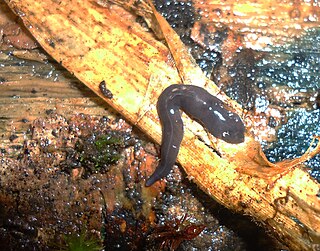
Notogynaphallia is a genus of land planarians from South America.
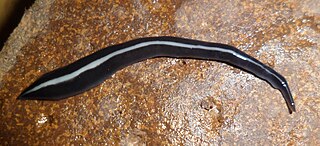
Paraba franciscana is a species of land planarian found in Brazil.
Gusana is a genus of land planarians found in Chile.
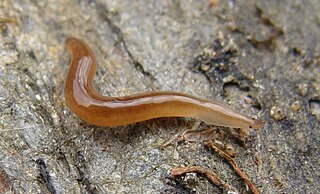
Rhynchodemus is a genus of land planarians in the tribe Rhynchodemini.
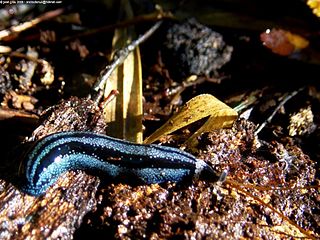
Pseudogeoplana is a genus of land planarians of the subfamily Geoplaninae. It was erected to include species lacking sufficient morphological information to allow them to be classified in the appropriate genus.
Paraba caapora is a species of land planarian belonging to the subfamily Geoplaninae. It is found within Brazil.
Paraba aurantia is a species of land planarian belonging to the subfamily Geoplaninae. It is found within Brazil.
Paraba iguassuensis is a species of land planarian belonging to the subfamily Geoplaninae. It is found within Brazil.
Paraba smaragdina is a species of land planarian belonging to the subfamily Geoplaninae. It is found within Brazil.
Paraba tata is a species of land planarian belonging to the subfamily Geoplaninae. It is found within Brazil.

Australopacifica regina is a species of land planarian in the family Geoplanidae, found in Australia in both Queensland and New South Wales.














